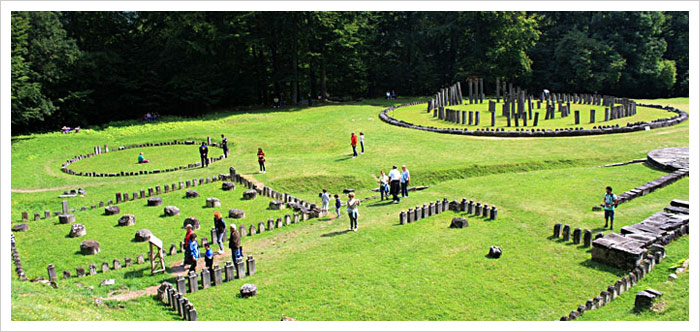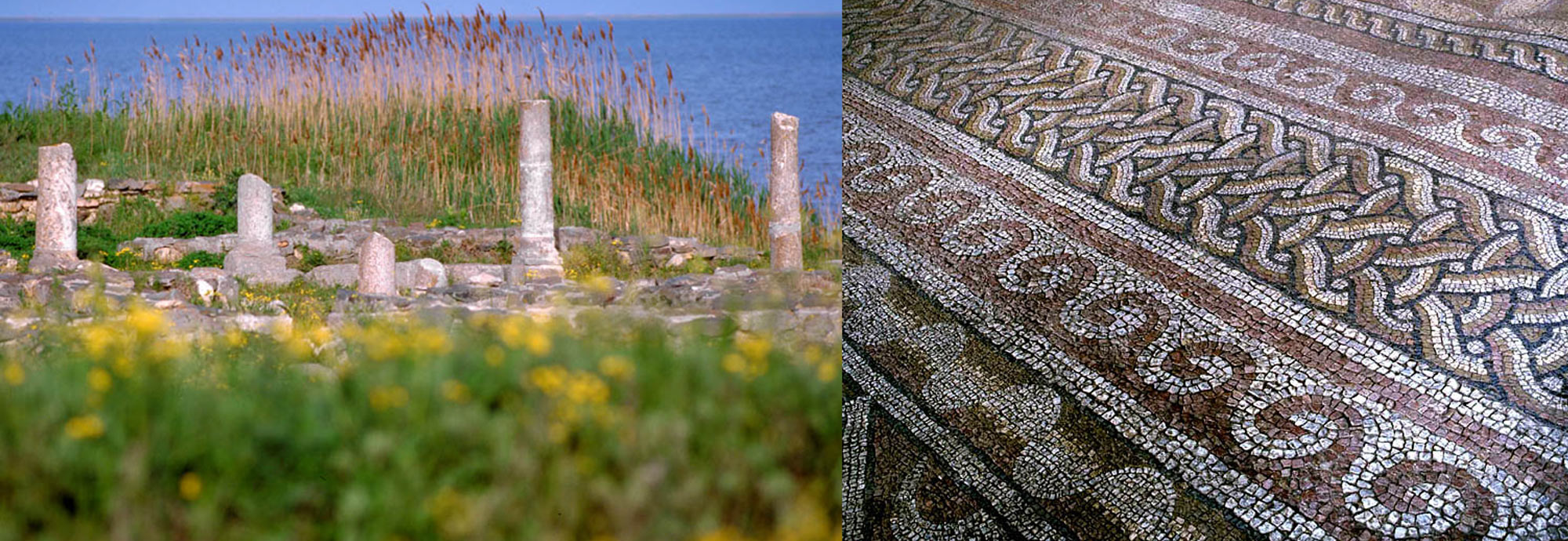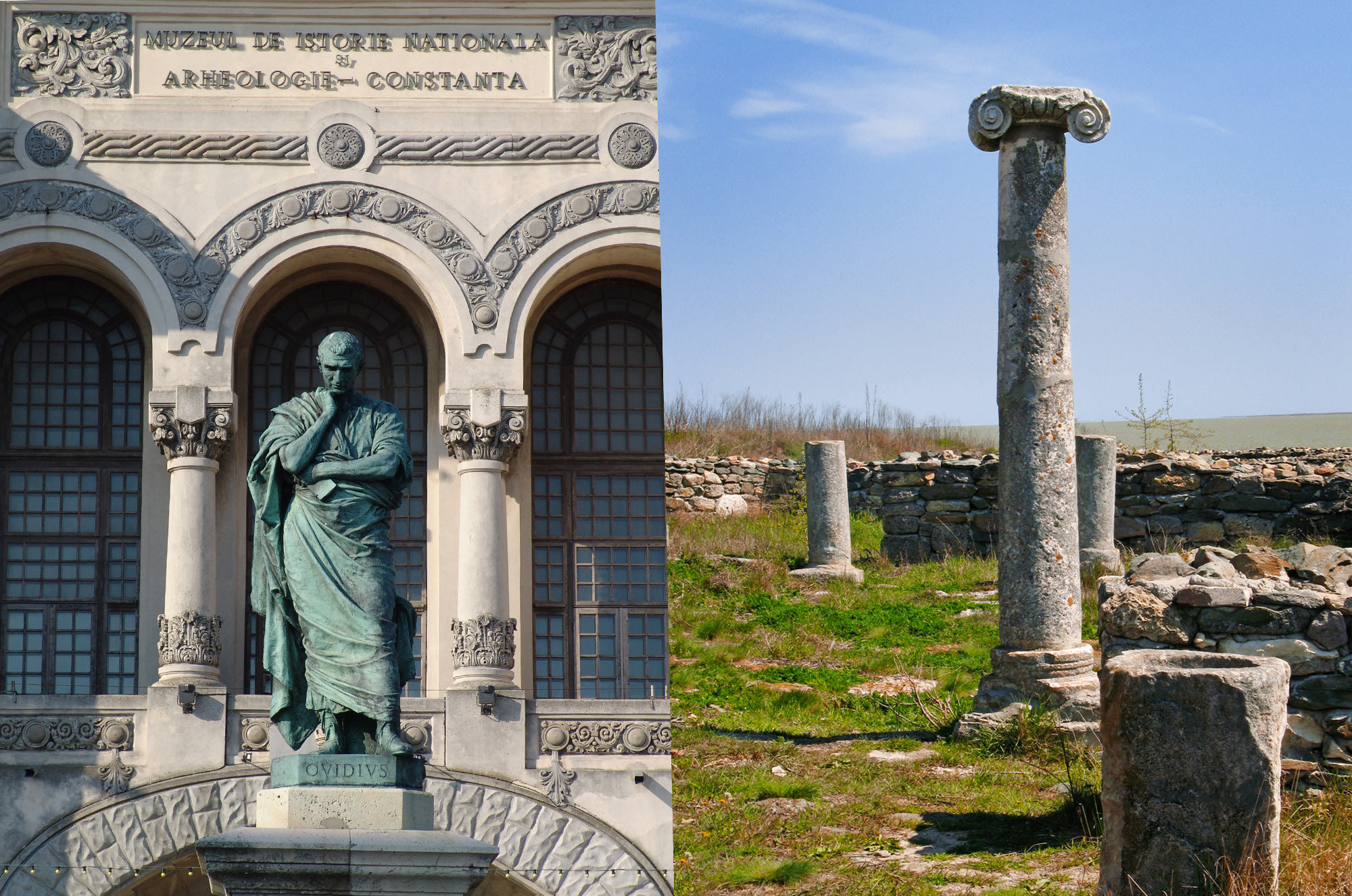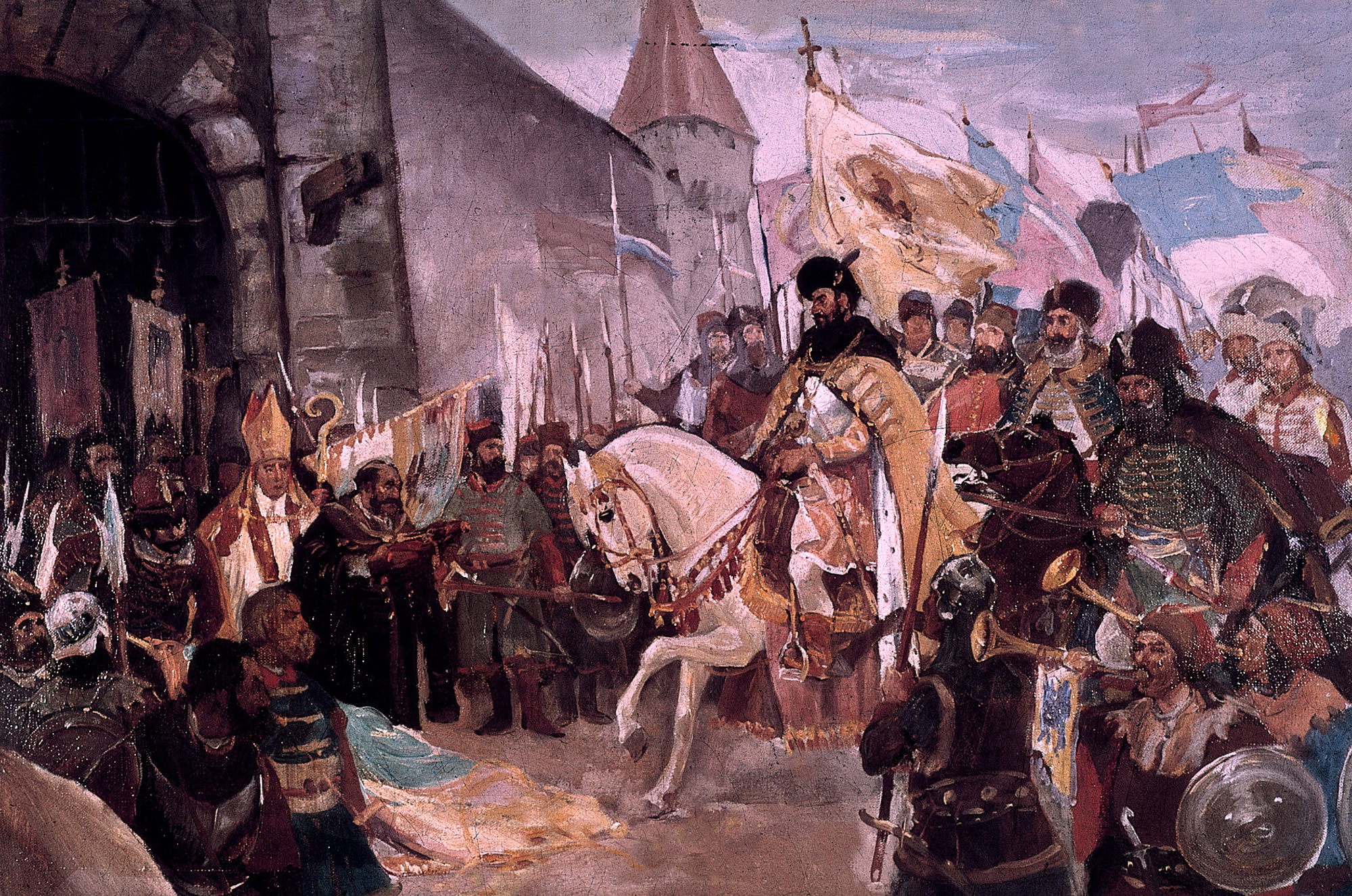
Romania's history has not been as idyllically peaceful as its geography.
Over the centuries, various migrating people invaded Romania.
Romania's historical provinces Wallachia and Moldova offered furious resistance to the invading Ottoman Turks.
Transylvania was successively under Habsburg, Ottoman, Hungarian or Wallachian rule, while remaining an (semi) autonomous province.
Romania's post WWII history as a communist-block nation is more widely known, primarily due to the excesses of the former dictator Nicolae Ceausescu. In December 1989 a national uprising led to his overthrow.
The 1991 Constitution re-established Romania as a republic with a multiparty system, market economy and individual rights of free speech, religion and private ownership.
- Ancient History / Roman Period (3600 BC – 500 AD)
- Middle Ages / Byzantine Period (500 – 1500)
- Early Modern / Ottoman Period (1500 – 1750)
- Mid Modern Period (1750 – 1914)
- Contemporary Period (1914 – present)
Some of the history that has shaped Romania
What is now Romania has been inhabited since the Paleolithic Age
as evidenced by carved stone tools unearthed there.
10,000 B.C.
Approximate date of the first known art in present day Romania: cave paintings in northwest Transylvania.
4,000 B.C.
Approximate date of pottery (dated to the Neolithic Age) that is found in all regions of Romania.
3,000 B.C.
Thracian tribes of Indo-European origin, who migrated from Asia, occupied the actual territory of Romania.
2,000 B.C.
A distinctive Thracian sub-group emerged in what is now Romania.
The Greeks called these people Getae, but to the Romans they were Dacians.
Herodotus called them "the fairest and most courageous of men" because they believed in the immortality of the soul and were not afraid to die.

700 B.C.
Greeks arrived and settled near the Black Sea.
The cities of Histria, Tomis (now Constanta) and Callatis (now Mangalia) were established.
Western-style civilization developed significantly.

70-44 B.C.
Dacian king Burebista controlled the territory of modern-day Romania.
Burebista created a powerful Dacian kingdom.
100 A.D.
Dacian civilization reaches its peak.
"The Dacians had a civilization of which they could be proud.
Their lands were rich in minerals, and they acquired great skill in metalworking. They traded with the Greek world, importing pottery, olive oil, and wine, and may have engaged in slave dealing. Compared with their neighbors they enjoyed a high standard of living, as well as a rich spiritual life.
Military, the Dacians were less advanced.
Unlike the Roman legions, they did not field a standing army, although there was a warrior class, the comati, or 'long-haired ones'. "
(attribution: Anthony Everitt, Hadrian and the triumph of Rome).
106 A.D.
Romans conquer and colonize Dacia (modern-today Romania).
106 - 274 A.D.
Dacia is a province of the Roman Empire.
Dacians gradually adopt numerous elements of the conquerors' language.
271 A.D.
After fighting off the barbarian Goths, most Roman troops abandon Dacia.
4th Century
Christianity is adopted by the Daco-Roman, Latin-speaking people.
Both "Byzantine Empire" and "Eastern Roman Empire" are historiographical terms created after the end of the realm; its citizens continued to refer to their empire as the Roman Empire (Ancient Greek: Basileia Rhõmaiõn; Latin: Imperium Romanum or Romania) and to themselves as "Romans".
4th - 9th Centuries
Nomadic tribes from Asia and Europe (Goths, Visigoths, Huns, Slavs) invade Dacia.
896 — late 1100s
Magyars (Hungarians) invade regions in western and central, present-day, Romania (Crisana, Banat and Transylvania).
The local population — Romanians - were the only Latin people in the eastern part of the former Roman Empire
and the only Latin people to belong to the Orthodox faith.
The oldest extant Hungarian chronicle, "Gesta Hungarorum" or The Deeds of the Hungarians, (based on older chronicles)
documents the battles between the local population in Transylvania, lead by six local rulers, and the invading Magyars.
12th Century
Invited to settle in Transylvania, by the king of Hungary who wanted to consolidate his position in the newly occupied territory,
Saxon (German) settlers begin to establish several towns in the region.
Szeklers people - descendants from Attila's Huns - were also brought to eastern and southeastern Transylvania as border guards.
13th Century
The first formal division of the formerly unified Romanian population.
The principalities of Wallachia, Moldavia, and Transylvania are established.
Transylvania becomes an autonomous principality under Magyar rule, until 1526.
Magyar forces tried unsuccessfully to capture Wallachia and Moldavia.
14th-15th Centuries
Wallachia and Moldavia offered resistance to the Ottoman Empire expansion.
1526
Transylvania (a semi-autonomous principality) becomes subject to Ottoman (Turkish) authority.
16th-17th Century
Threatened by the Turks who conquered Hungary, the three Romanian provinces of Wallachia, Moldova and Transylvania are able to retain their autonomy by paying tribute to the Turks.
The principality of Transylvania prospered as a vassal state of the Ottoman Empire.

1600
Wallachia, Moldavia and Transylvania (map) are briefly united under Mihai Viteazul (Michael the Brave), prince of Wallachia.
Unity lasted only one year after which, Michael the Brave was defeated by the Turks and Hapsburg forces.
Transylvania came under Hapsburg rule while Turkish suzerainty continued in Wallachia and Moldavia.
1699
Transylvania and Bucovina (smaller region north of Moldavia) are incorporated in the Habsburg Empire.
1765
Transylvania was declared a Grand Principality of Transylvania, further consolidating its special separate status within the Habsburg Empire.
1821
Moldavia loses its eastern territory east of river Prut (also called Bessarabia) to Russia.
1856
The principalities of Wallachia and Moldavia — for centuries under the suzerainty of the Turkish Ottoman Empire -
secure their autonomy.
1859
Alexandru Ioan Cuza is elected to the thrones of Moldavia and Wallachia.
1862
Wallachia and Moldavia unite to form a national state: Romania.
1866
Carol I (German born) succeeds Alexandru Ioan Cuza, as prince of Romania.
1867
Transylvania falls under the direct rule of Hungary and a strong push for Magyarisation (of names and official language) follows.
1877
On May 9 the Romanian parliament declared the independence of Romania from the Ottoman Empire.
A day later, the act was signed by Prince Carol I.
1881
Kingdom of Romania officially proclaimed.
1892
The leaders of the Romanians of Transylvania sent a Memorandum to the Austro-Hungarian Emperor, Franz Joseph
demanding an end to persecutions and Magyarization attempts.
1914
King Carol I dies. He is succeeded by his nephew King Ferdinand I (1914-1927).
Romania enters WWI on the side of the Triple Entente aiming to regain its lost territories (part of Transylvania, Bessarabia and Bucovina).
1918
During large public assemblies representatives of most towns, villages and local communities in Transylvania, Bessarabia and Bucovina proclaim union with Romania.
1930
Carol II, Ferdinand's I son, becomes king of Romania and, soon after, establishes royal dictatorship.
1939
Germany demands a monopoly on Romanian exports (mainly oil, lumber and agricultural products) in exchange for the guarantee of its borders.
1940
The Soviet Union annexes Bessarabia (eastern Romania - today Republic of Moldova) and Northern Bucovina (NE Romania).
Germany and Italy force Romania to cede Northern Transylvania to Hungary.
Widespread demonstrations against King Carol II.
Marshall Ion Antonescu forces him to abdicate in favor of his 19-year-old son Michael. Carol II flees Romania.
1941
Marshall Ion Antonescu imposes a military dictatorship.
In order to regain ist eastern territory - Bessarabia - Romania enters WWII against the Soviet Union.
1944
King Michael I engineers a royal coup and arrests Marshall Ion Antonescu.
Romania reenters war on the Allies side.
1945
The Yalta Agreement makes Romania part of the Soviet system.
Communist-dominated government installed.
1947
With Soviet troops on its territory, Romania enters the sphere of influence of the Soviet Union.
The communists, who gradually took the power, force King Michael I to abdicate and proclaim Romania a People's Republic.
King Michael leaves the country and moves to Switzerland.
1950s
After Stalin's death, Romania begins to distance itself from Moscow.
1964
Romania declares autonomy within Communist Bloc.
1967
Nicolae Ceausescu becomes President of the Council of State merging leadership of state and party.
1968
Romania condemns the Soviet-led Warsaw Pacy invasion of Czechoslovakia;
Romania's communist leader Nicolae Ceausescu, earns praise and economic aid from the West.
1974
Romania was the first country of the Soviet Bloc to have official relations with the European Community.
(and sign a treaty that included Romania in the Community's Generalized System of Preferences).
1980s
Obsessed with repaying the national debt and megalomaniac building projects Ceausescu orders a ban on importation of any consumer products and commands exportation of all goods produced in Romania except minimum food supplies.
Severe restrictions of civil rights are imposed.
1982
Romania calls on Soviet Union to withdraw from Afghanistan.
1987
Ceausescu indicates Romania will not follow Soviet reform trends "Perestroika".
1989
Romanians unite in protests against the communist leadership and local demonstrations sparked a national uprising
that finally ousted communist ruler Nicolae Ceausescu and his cabinet.
1990
First free, multi-party elections after WWII are held in Romania.
1991
Romanians vote for a new Constitution.
2004
Romania joins NATO (North Atlantic Treaty Organization).
2007
Romania becomes a member of the European Union.
Additional reading:
Romania, An Illustrated History by Nicolae Klepper
- an insightful synthesis addressed to all those who want to learn about Romania's history, politics, culture, and society.


